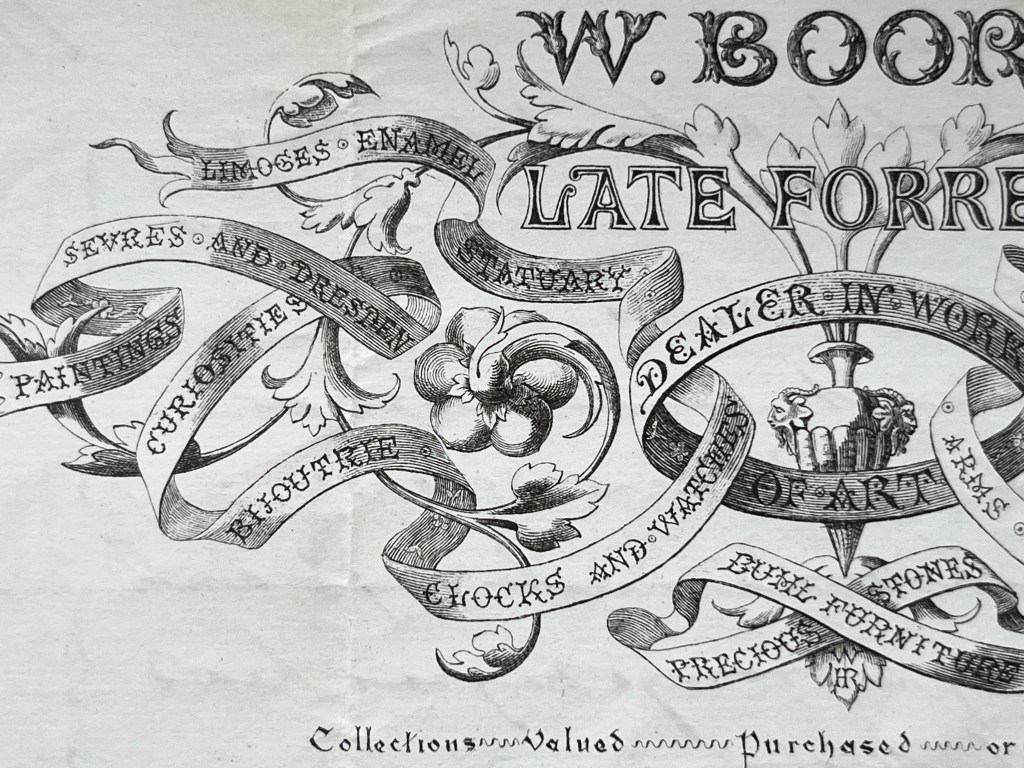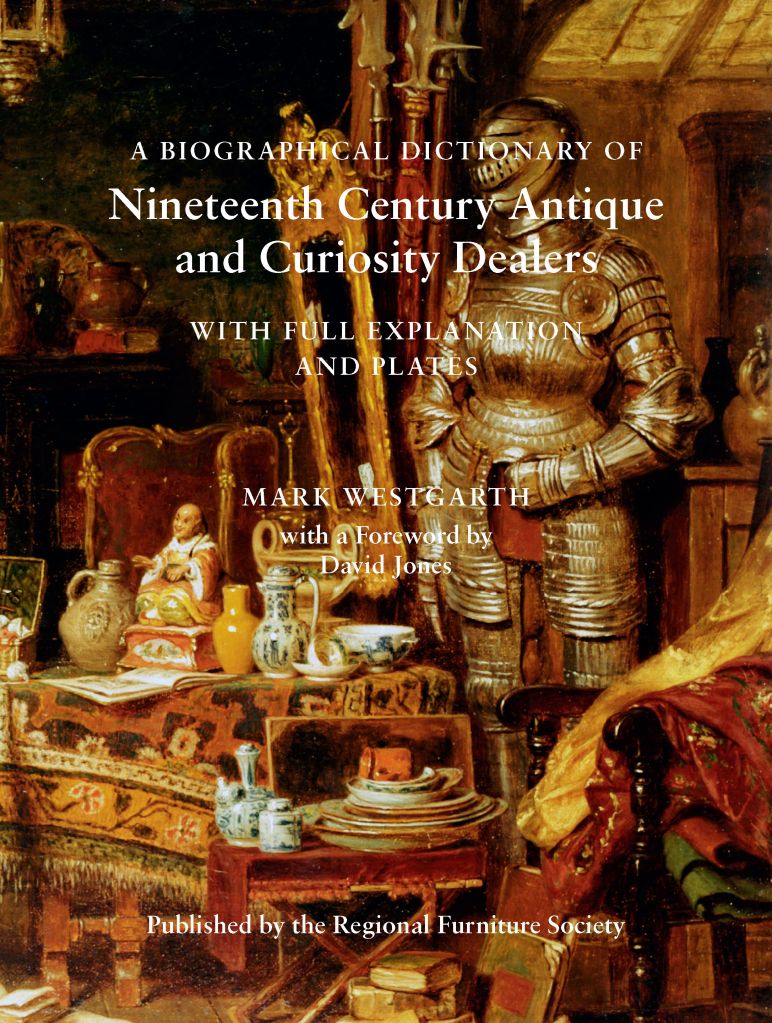A very recent acquisition to the growing archive of antique dealer ephemera, gathered as part of the wider antique dealer research project, is a fascinating cache of invoices from the dealer William Boore, dating from the late 1880s to mid 1890s.

They relate to sales of antiques and jewellery by the dealer William Boore to John Edward Taylor (1830-1905), the prominent newspaper proprietor and owner of the Manchester Guardian, which had been founded by his father John Edward Taylor (1791-1844). John Edward Taylor the younger was a major art collector; he donated many watercolour paintings to The Whitworth Art Gallery in Manchester and to the Victoria & Albert Museum in London in the 1890s. His extensive collection of paintings, sculptures a very wide range of antiques was sold at auction by Christie’s in 1912, following the death of his widow, Martha Elizabeth Taylor (1828-1912). Here (below) is a cover of the auction catalogue of Taylor’s collection.

But of course, whilst this research blog is interested in collectors such as Taylor, it’s much more interested in the antique dealers that helped to assemble such collections. In fact, as well as the contents of the invoices of course and what they tell us about Taylor’s buying activities, what prompted me to acquire the cache of letters was the printed invoice headings themselves – ‘W. Boore, Late Forrest’ as they state – which connects William Boore with one of the most famous antique dealers of the 19th century, William Forrest (1798-1854).
Indeed, the writer George Retford, publisher of the famous Art Sales: a history of sales of pictures and other works of art (2 vols. 1888), described William Forrest as ‘the best informed dealer of his day’. He began trading in Edinburgh in the 1820s, but by the late 1830s he was in London at 54 Strand trading as ‘jeweller and dealer in silver plate and curiosities’. He died in Paris on 14th October 1854. Forrest sold antiques and curiosities to all the major collectors of the first half of the 19th century, including Ralph Bernal (1783-1854) and A.W. Franks (1826-1897); he was also a regular buyer at key auction sales such as those at Strawberry Hill, the collection assembled by Horace Walpole (1717-1797) and sold by the auctioneer George Robins (1777-1847) in 1842, and at the auction of the contents of Stowe in 1848.
It seems that William Boore not took over Forrest’s shop in Strand, but also seems to have continued the business? He certainly seems to have deliberately drawn from the high profile and reputation that Forrest had amongst collectors of antiques by highlighting Forrest’s name in his invoices. What is also interesting (to me at least!) is how Boore highlights in his invoice headings of a range of antiques and curiosities that hark back to the practices of early 19th century dealers such as Forrest. The printed invoice heading, dating from late 1880s, lists a range of objects that would have been very familiar to Forrest in the 1840s – ‘Paintings, Curiosities, Sevres and Dresden [porcelains], Limoges Enamel, Statuary, Bijoutrie [jewellery, trinkets], Clocks & Watches, Precious Stones, Buhl Furniture [Boulle], Bronzes, Ancient Carvings, Arms & Armour, Gems and Cameos, Antique Plate [silver], Ivories, Majolica [ceramics]…all under the main heading of ‘Dealer in Works of Art’ – (see below).


Boore continued the tradition of Forrest, selling antiques to major collectors of course; as well as selling to John Edward Taylor, William Boore also counted George Salting (1835-1909), who left his collections of paintings to the National Gallery, his prints and drawing to the British Museum, and his antiques to the Victoria & Albert Museum, as a customer.
And if you are interested in finding out more about dealers such as William Forrest, you can always consult my Biographical Dictionary of 19th century antique & curiosity dealers (2009 & 2011) – it’s FREE and online at the White Rose Research Online

And for those provenance researchers out there – the invoices from William Boore don’t seem to point to any of the objects that were sold at Christie’s in 1912? But I’ll keep looking!
Mark
Leave a comment